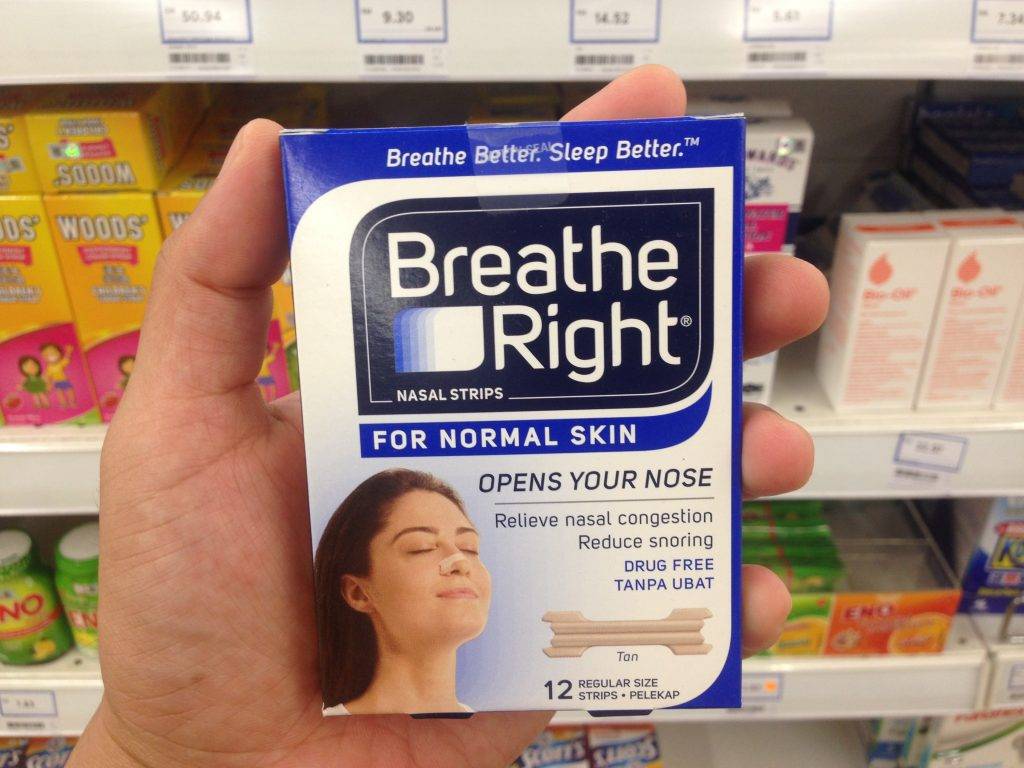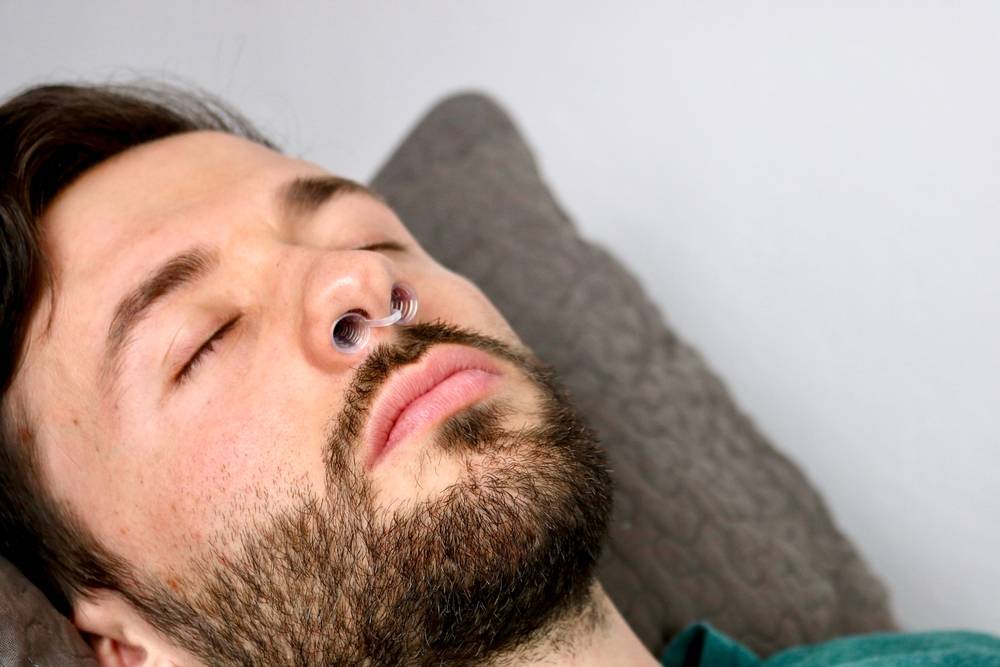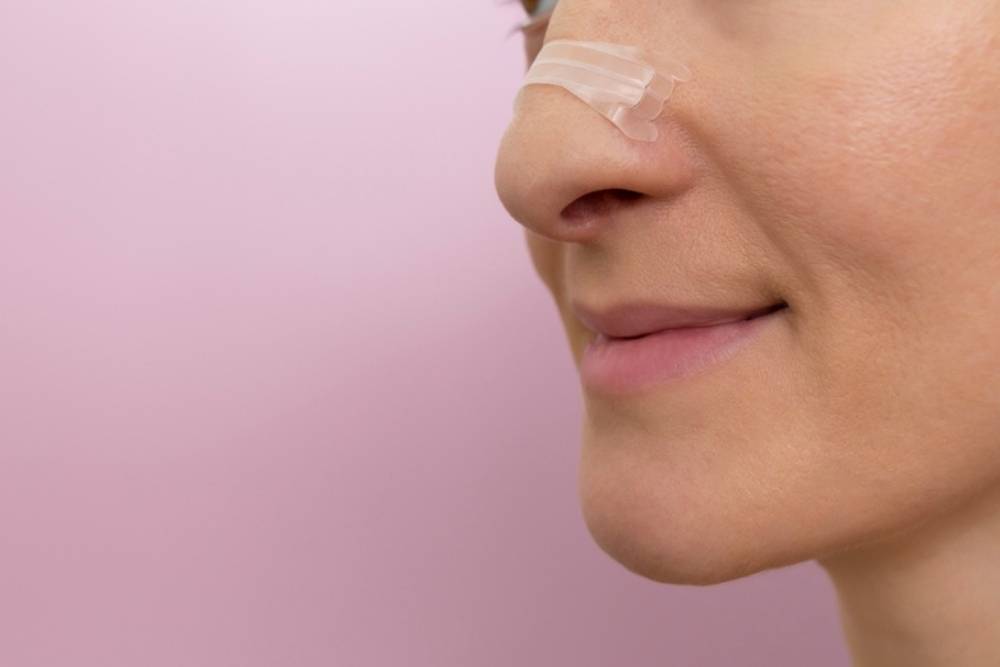If you often experience snoring and dry mouth in your sleep, try this: Look into a mirror and press the side of one nostril to close it. Close your mouth and breathe in through the other nostril. If you notice your nostril collapsing, nasal strips may solve your snoring problems.
What are Nasal Strips?
Nasal strips are tape-shaped medical devices with adhesive, designed to be placed on the nose. They are meant to widen the nose, thereby helping to improve airflow and reduce breathing difficulties.
This can be helpful for people who:
- Are born with narrow nasal passages
- Have a deviated septum
- Have nasal congestion due to a cold or allergies
How Do Nasal Strips Work?
Nasal strips apply a gentle pulling force on the sides of the nose, which helps to open and stabilise the sidewalls of the nose. This makes the narrowed nasal passages wider.
By reducing resistance in the nasal passages, these strips improve overall airflow. Research shows that the use of nasal strips can significantly relieve the symptoms of nasal congestion, making breathing easier, especially during sleep or physical activity.
Nasal strips are very easy to use and are non-invasive, making them a popular choice for a wide range of users, including children and adults, as a quick solution to temporary nasal congestion.

In a study done in 35 heavy snorers, who used Breathe Right nasal strips over a 2 week duration, there were significant improvement in snoring (as graded by their bed partner!), and other symptoms like mouth dryness and daytime sleepiness.
Side Effects of Nasal Strips
Although nasal strips are generally safe and effective for relieving nasal congestion, there are some side effects to be aware of.
Some users may experience irritation or allergic reactions in the affected area, such as redness or rashes on the skin of the nose. Some people can feel discomfort if they wear the strips for too long.
It is also possible that regular use may make some people feel dependent on these strips to breathe better, although this dependence appears to be more psychological than physical.
While these nasal strips may improve symptoms such as snoring, they do not treat conditions like sleep apnoea. Using these strips to reduce sleep apnoea symptoms may lead to undertreating of the condition, and result in complications.
Innovation in Nasal Strips For Sleep
There have been innovative adaptations to the traditional nasal strip design. For example, brands like Intake Breathing and Better Sleep have explored using magnetic tabs and bands. This aims to address some of the limitations of traditional nasal strips, like limited wearing durability. The magnetic version seeks to offer prolonged comfort and seamless wearing.
@seandreww I tested the viral magnetic nose strip.. Here’s what happened.. 🤣 #fyp ♬ original sound – Sean Andrew
Other Ways to Reduce Snoring
Besides nasal strips, there are several other ways one can explore to improve their breathing and sleep quality.
Internal nasal dilators are another option. They are small and flexible to fit into the nasal passages to physically widen the nostrils from inside. A literature review found that internal nasal dilators may be slightly more effective than external nasal strips at improving snoring symptoms.

Oropharyngeal exercises, or myofunctional therapy can strengthen the muscles around the respiratory tract, reducing the chances of blockage during sleep. These exercises include tongue slide, tongue stretches, and even facial exercises. They are often taught by trained myofunctional therapists. These exercises can tone the airway and tongue muscles while promoting breathing through the nose, to reduce snoring.
For people who are overweight, weight loss can also be an effective solution. Excess fat around the neck can constrict the airways and trigger snoring. By losing weight, the pressure on the airways can be reduced.
In addition, a change in sleeping position can also have a significant impact; sleeping on one’s side can prevent the tongue and soft tissues from blocking the airway, as opposed to sleeping on the back.
A mandibular advancement device (MAD) may be an option worth considering. It works by pulling the lower jaw and tongue forward, creating more space in the back of your throat for air to flow freely.

It is important to consult a healthcare professional for a thorough assessment if you experience problems like difficulty breathing, loud snoring, or poor sleep quality. Conditions such as Obstructive Sleep Apnoea (OSA) require assessment and early treatment if diagnosed. Seeing a doctor can help identify underlying issues to ensure they are properly diagnosed and managed.
Read also: Can Mouth Taping and Nasal Strips Effectively Stop Snoring?
What’s The Verdict?
In conclusion, nasal strips can be an effective solution to help relieve nasal congestion and improve breathing quality, especially during sleep. While they are generally safe to use, it is important to be aware of the potential side effects and variations in their effectiveness between users.
In addition to nasal strips, various other methods such as oropharyngeal exercises, weight loss, and changes in sleeping position can also contribute to snoring reduction. Combining some of these approaches and consulting a doctor will help you find the most suitable solution for your needs.

